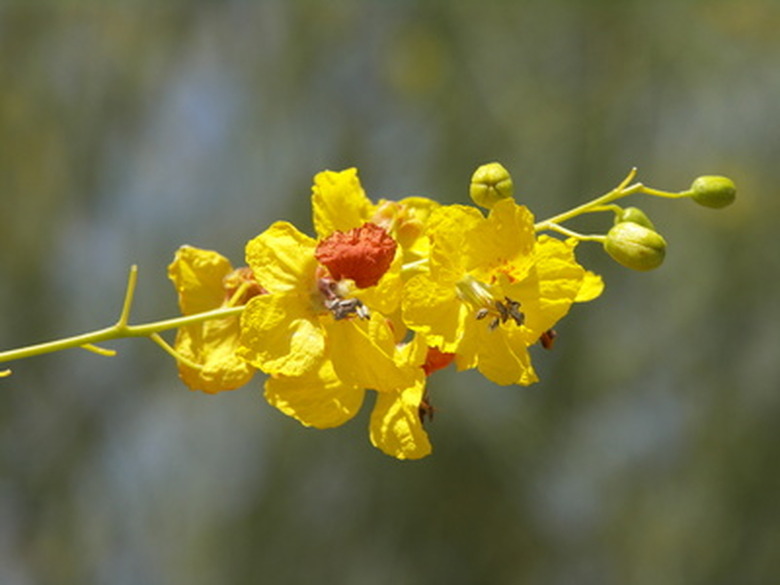Palo Verde Tree Diseases
Palo verde trees are spiny, green, deciduous trees that display yellow blooms, with multiple trunks and a short flowering season. Though not known for a significant amount of disease, palo verde tree diseases do occur because of fungus and pest attacks. When infected by a fungus or infested by a pest, the palo verde tree's health is at risk.
P. Omnivora
P. omnivora is a fungal infection that causes disease of palo verde trees. According to the University of Arizona College of Agriculture and Life Sciences, P. omnivora causes root infection that leads to poor health and the eventual death of a plant. Living in the soil of the palo verde tree, P. omnivora grows strands that attach themselves to the tree's roots. The fungus uses the tree for energy and can cause extensive root infection. P. omnivora shows no symptoms within the first few years after planting; the fungus lives deep-seated within the soil. P. omnivora does not attack seeds or young trees, but feeds on mature palo verde trees. The fungus may not be able to reach a tree's roots until they have physically grown as deep as the site populated by p. omnivora. Though there is no removal method for P. omnivora infection, a palo verde tree that is kept healthy and vigorous may be able to tolerate the fungal infestation. Weakened and mature trees, however, are susceptible.
Spider Mites
Spider mites are a pest that cause palo verde tree disease. When spider mites infest a palo verde tree, they cause witches' broom. This is when the palo verde tree develops dense clusters of small, abnormal branches that rise from the branch or its tip. While this disease is mostly a cosmetic issue, it can diminish the health of the tree. Though spider mites and the resulting witches' broom generally will not cause the death of a palo verde tree, they can diminish the health of the tree. The effects of spider mites can be controlled with pruning.
Mistletoe
Mistletoe is a common parasitic plant that causes palo verde tree disease. According to the University of Arizona College of Agriculture and Life Sciences, mistletoe grows in scraggly bushes that hang from palo verde branches. Mistletoe grows into the tree and can cause a slow death. The parasitic plant leaches its energy from the tree and causes lower trunk infections that lead to disease and tree death. Though mistletoe can infest palo verde trees and create a significant loss in a tree's vigor, the infestation can be easily controlled with pruning.
Palo Verde Root Borer
Palo verde root borers are pests that cause severe tree disease. While other palo verde tree diseases may be easily controlled, there is no particular course of action for removal of palo verde tree root borers. A root borer (Derobrachus geminatus) that feeds on palo verde trees is the larval grub stage of the palo verde beetle that reaches 3 to 3 1/2 inches in length. Using roots of the palo verde tree as an energy source and a growth environment, the palo verde root borer reaches up to a length of 5 inches in its larval stage while it attacks the roots of the palo verde tree. According to the University of Arizona Aridus, when a dead palo verde tree is lifted from the ground, the roots are usually infested with palo verde root borer larvae. Also, during summer rains, the adult beetle will exit the soil in 1-inch-wide holes. Adult beetles are dark brown to black, with antennae approximately half the size of their bodies.
